Just curious what veteran modelers use for a gloss coat prior to decaling? Do you brush or spray (and airbrush or rattle can)? Just wondering what works the best.
Todd
Just curious what veteran modelers use for a gloss coat prior to decaling? Do you brush or spray (and airbrush or rattle can)? Just wondering what works the best.
Todd
Airbrush Model Master Gloss
I paint with Scalecoat II glossy paints. No glossy finish needed.
.
If I do need a glossy coat, I use Future Floor Polish.
.
-Kevin
.
Like Kevin, I too paint my models with an airbrush, using Scalecoat II paint, which has a gloss finish. Apply decals, then use Scalecoat clear flat over the whole model.
Less steps, works great.
Sheldon
Same here, with Kevin and Sheldon.
Mike.
Same here with Kevin, Sheldon and Mike.
I’ve never had poor results using Scalecoat I or II
 PRR_X-42fini by Edmund, on Flickr
PRR_X-42fini by Edmund, on Flickr
 PRR_X-42fini-end by Edmund, on Flickr
PRR_X-42fini-end by Edmund, on Flickr
Good Luck, Ed
I use Testors Glosscote, thinned with lacquer thinner and airbrushed. After the decals are applied and set, it gets another application of Glosscote (the shine of most decals is not the same as the shine on which it’s applied, and this second application evens-out that shine).
It’s then given an application of Dullcote (or a not-too-shiny coat of semi-gloss if it represents a fairly new car).
After that, I add weathering - airbrushed and/or oil-based pastels, applied with a brush.
Red Caboose X-29 boxcar, modified to match a still-extant prototype (Champ decals on Pollyscale paint)…
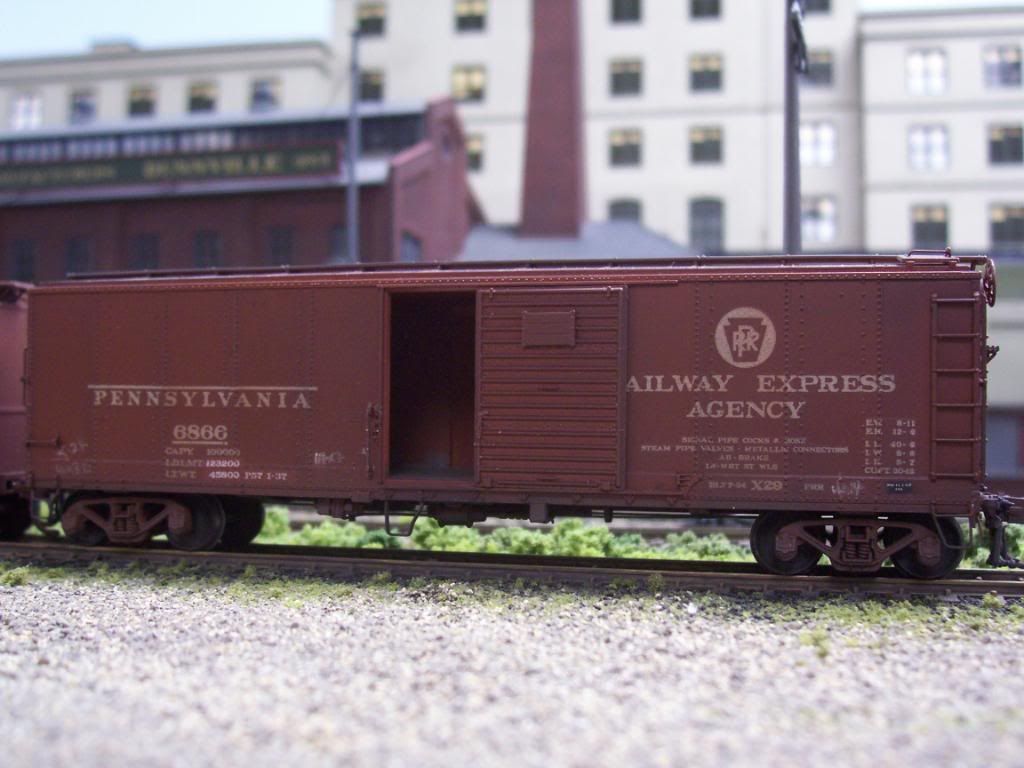
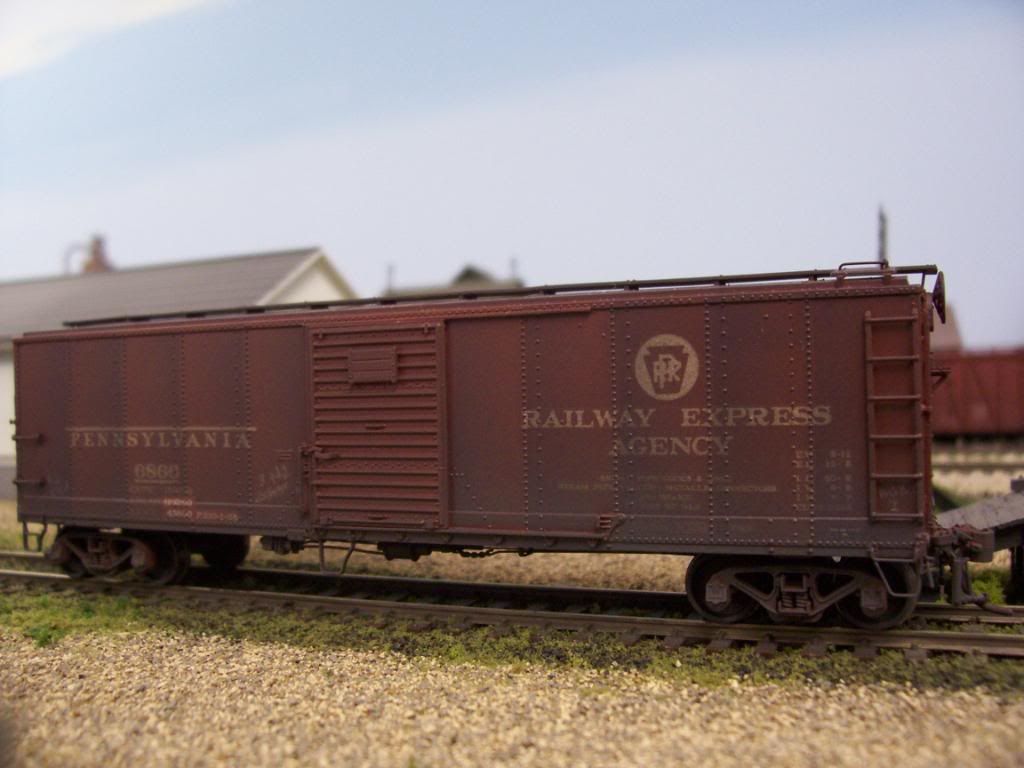
Scratchbuilt 1932 ARA boxcar (decals from Speedwitch Media on Pollyscale paint)…

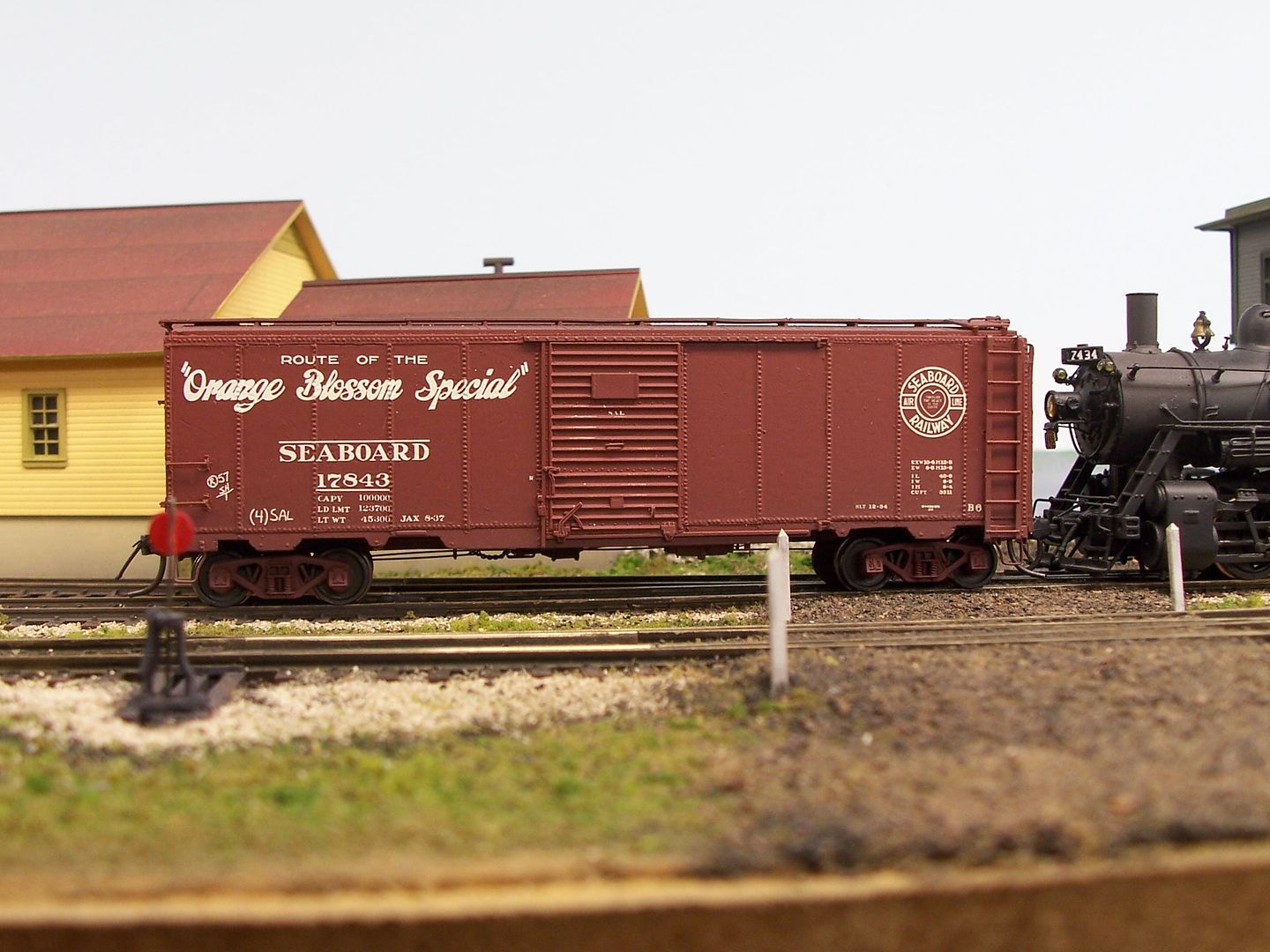
Modified Accurail Dominion-Fowler boxcars (Rail Graphics custom decals on Pollyscale paint)…
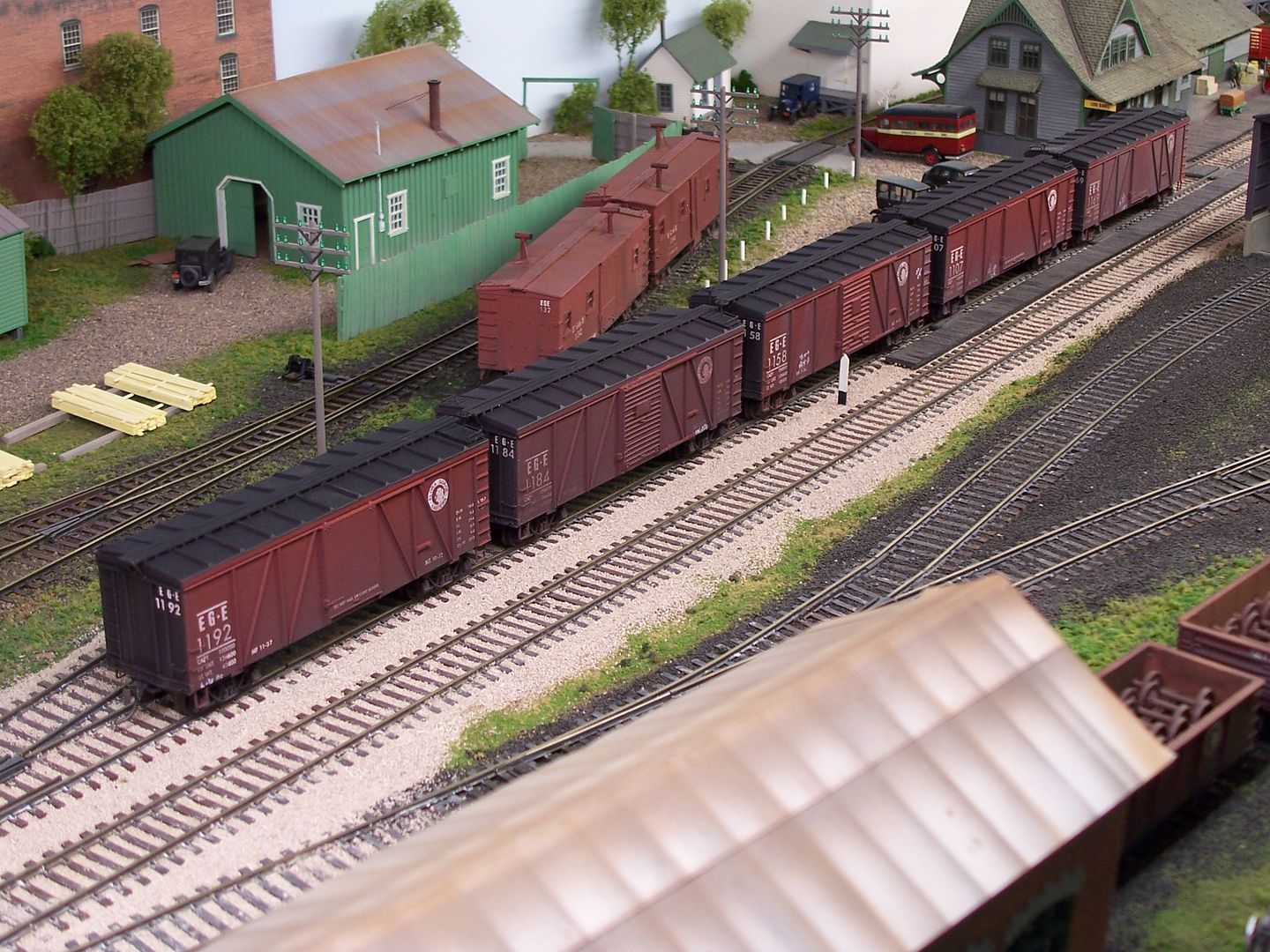
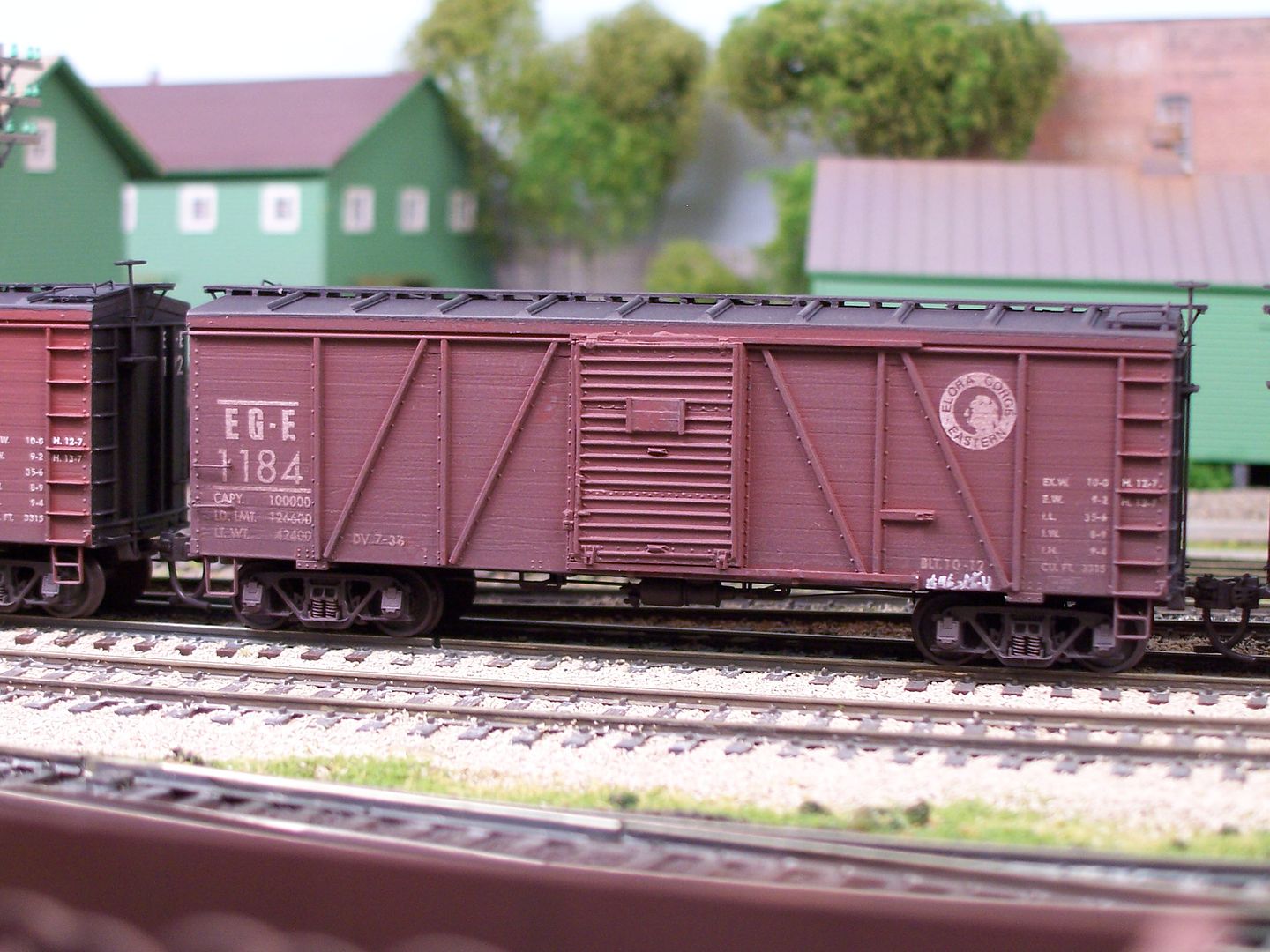
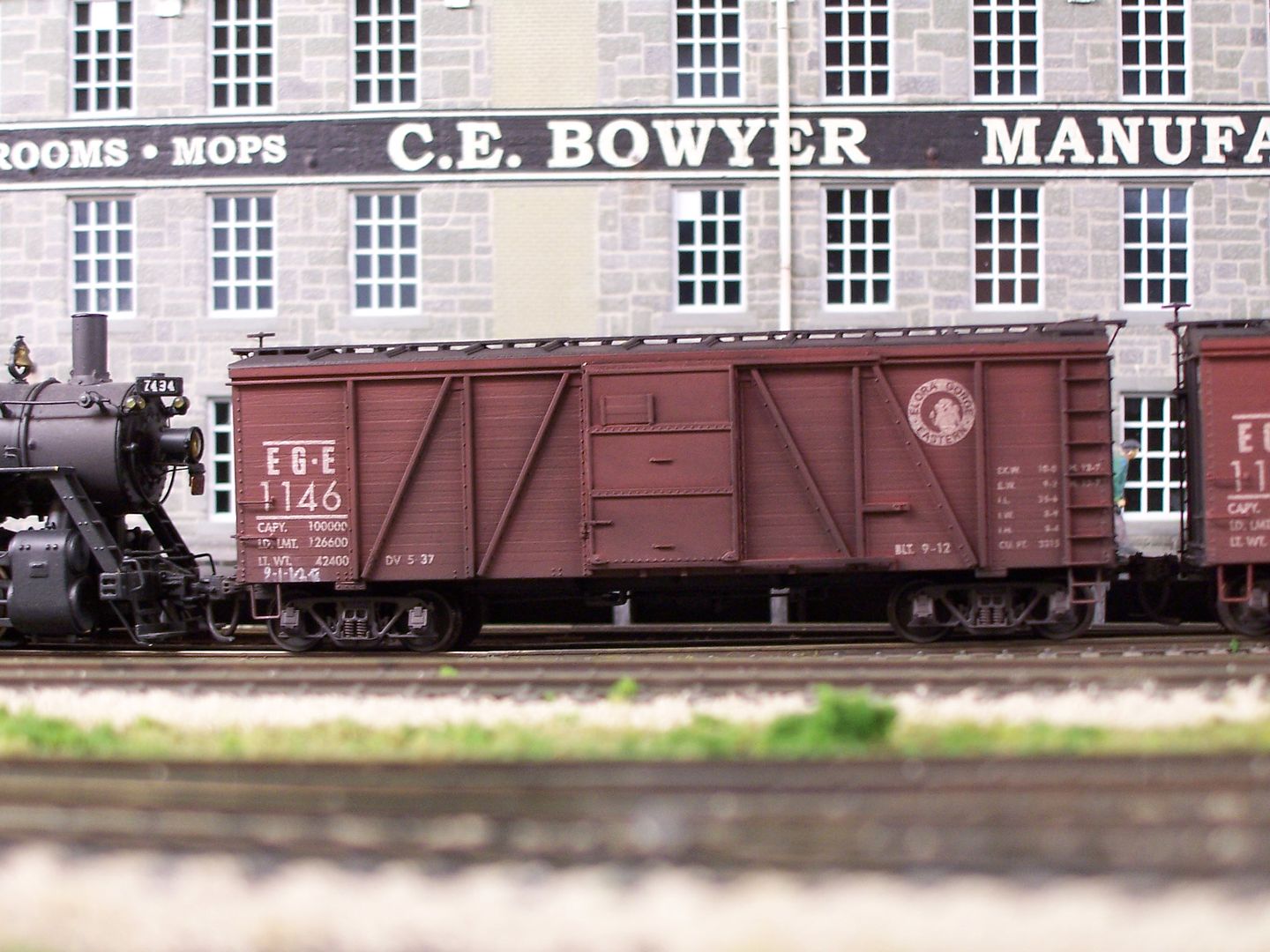
When Pollyscale was discontinued, and Scalecoat announced the wrap-up of its product line, I bought a couple hundred dollars-worth of their paint, driving to Northumberland to pick it up. While I had used it in the past, it wasn’t one of my favourites, and I can’t say that it is nowadays, either. Minuteman Models
“While it’s decent-enough paint, it dries much too slowly for my tastes, especially so when painting steam locomotives.”
And that is what I like about it…
I have never been able to master working with acrylic paint using an air brush. Every time I have tried it, I end up with paint rock hard in the air brush, I’m just too slow…or not well enough organized.
Solvent paints have long open times, that just works better for me.
Sheldon
I’ve done some cars with just the floor polish, where I didn’t want a shiny finish, just something for the decals, then a light dullcoat.
A transfer caboose I scratch built lasy year. The MILW. had a different name for them, getting late, can’t remember right off hand.
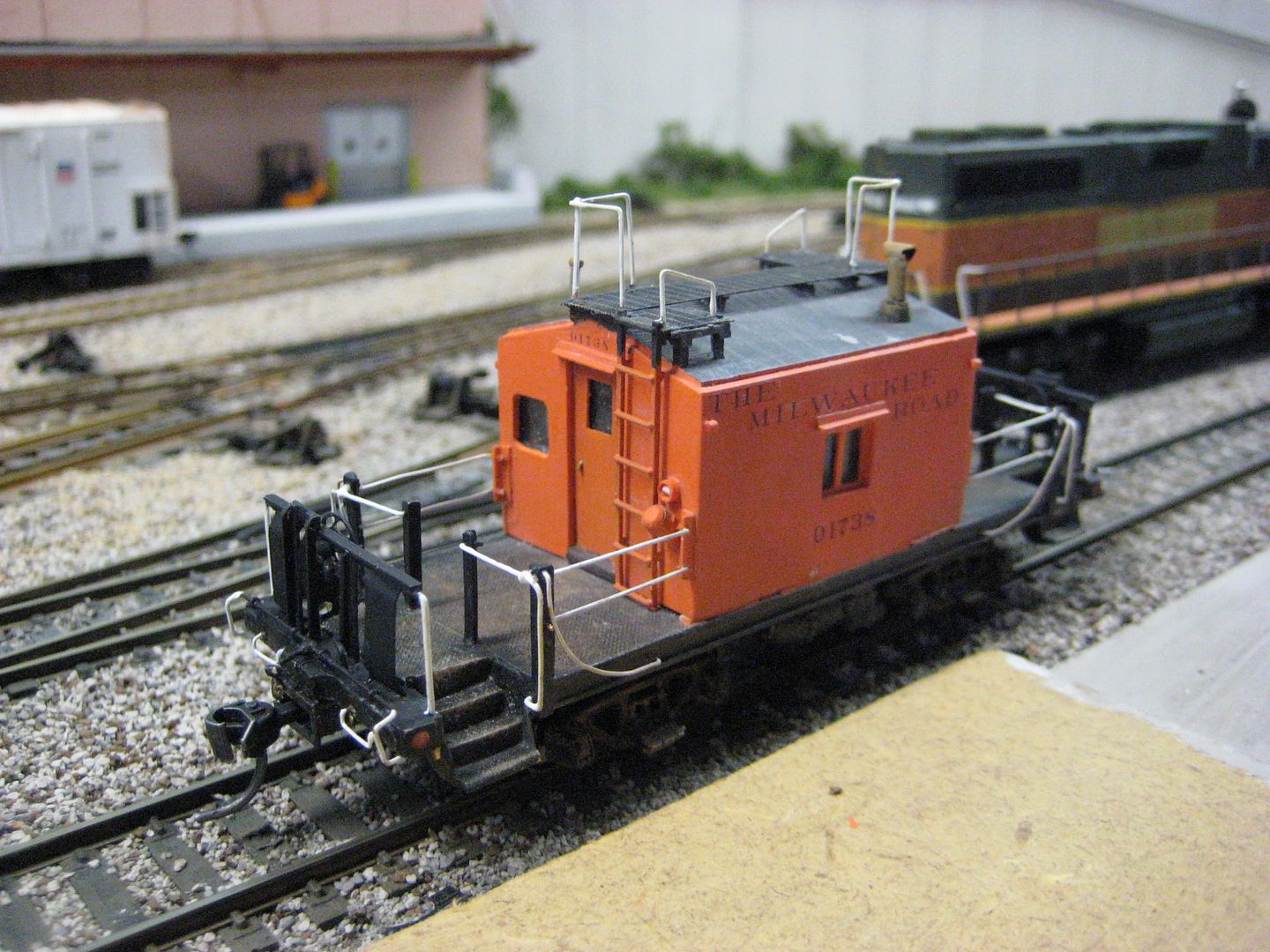
Terminal caboose ?
Mike.
I do understand that, Sheldon, but when I paint steam locomotives, I use a minimum of four versions of “black”, and Pollyscale dries fast enough that I can use a hand-held “shield” (piece of cardstock or plastic) to provide the demarcation between the different “blacks”. If there’s any overspray, I simply re-do it in the same session. The paint is merely dry to the touch, so it can be handled carefully without worry of marring the finish. I let it “cure” for several days before adding lettering and the final finishes, though.
I initially had the same problems when attempting to airbrush Pollyscale, and read of dozens of methods here about the best way to do airbrushing with that paint. All my attempts were similar to your experience, until one day I decided to consult Pollyscale’s site for their advice. It turned out that those using alcohol or windshield washer fluid, Windex, etc. may have had some sort of success, and ditto for those using higher spray pressures than for a thin paint such as Floquil (my previous go-to paint for both brush and airbrush work), but Pollyscale recommend thinning 10-15% with water (distilled water if your tap water was exceptionally hard) and spraying at a pressure between 15-20 psi.
I figured it was worth a try, as I had not had the success claimed by others here.
Much to my surprise, it worked! Not only worked, but worked exceptionally well, and in that session, I airbrushed four dozen various freight cars, changing or mixing colours as I worked (the cars were for various railroads, so many shades of “boxcar red” were required).
[quote user=“ATLANTIC CENTRAL”]
…I have never been able to master working with acrylic paint using an air brush. Every time I have tried it, I end up with paint rock hard in the air brush, I’m just too slow…or not w
Wayne, thanks for the info.
With Polyscale gone, and no good hobby shops carrying any other stuff close by, it seems pointless now for me to invest in acrylics at all.
Since I have to order it anyway, I will just stay with what I know.
Sheldon
I don’t consider myself a “veteran” modeler. When applying decals, I use Pledge Floor Finish. If it’s a large area, I use an airbrush for application. If small area, use a brush on the area where the decal is going to be applied.
Reasons: Ease of application, self-leveling, dries in minutes, easy clean-up, low cost
Terry
I am with most, I use Scalecoat for 90% of my painting projects, when I do use some of my Floquil flat colors, I gloss with Testors Glosscoat. I used to use Microscale Gloss, but since they went to acrylic I quit using them.
Rick Jesionowski
Nice variety of choices listed above, all good options!
I prefer Scale Coat II whenever possible as it yields a hard, glossy finish in one step. To avoid **"**Aargh!" moments, I spray a test panel first, just before spraying the model, to make sure that the airbrush is working properly and that the paint is laying down smoothly.
When using Polyscale acrylics or Testors Acryl, I apply Alclad II’s high gloss Aqua Klear (water based) over them. The AK flows out smoothly and gives you a bit more working time than Future. Finish is slick.
Future is also an excellent product but don’t ever let it sit in the airbrush for long…especially in higher temperature conditions! Doesn’t take long for it to “gum up” inside.